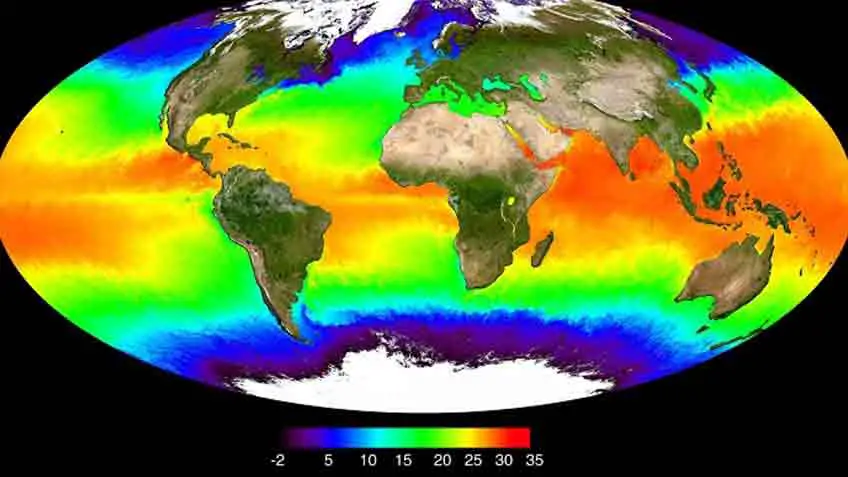The primary threat that coral reefs are confronting on a worldwide scale is climate change. Researchers concur that environmental change is genuine, which spells something devastating for the world’s coral reefs.
Coral reefs are some of the most important and diverse habitats on planet earth. A single coral reef can provide a home to 400 fish at a time. Although in total, they cover less than 0.1% of the world’s ocean surface area, they provide habitat for 25% of all marine species. In addition, scientists have been discovering new species from these coral reefs. Hence for this, they have been called the rainforests of the ocean.
Human activities like burning fossil fuel, dumping garbage, and constant rising temperatures have brought significant danger to these coral reefs inside the ocean. The ocean absorbs most of the carbon dioxide, which in return has upraised the temperature of seas. The constant increase in ocean temperature has made it quite hard for coral reefs to survive and host the aquatic species. Despite causing more delays, it’s the right time to take action. But before, let’s go through our in-depth publication on how global warming affects coral reefs.
How Global Warming Affects Coral Reefs
The expansion of carbon dioxide in the air is one of the perceived reasons for our changing environment, and it is likewise perilous for coral reefs. The sea assimilates around 33% of the climate’s surplus carbon dioxide, bringing about a more acidic ocean. For a coral reef to develop, it should create limestone (or calcium carbonate) at a quicker rate than the reef is being dissolved. However, ocean acidification has slowed down the rate at which coral reefs produce calcium carbonate, which results in the relaxed growth of coral skeletons.
Coral Bleaching
One of the main threats to coral reefs in recent years is the growing acidity of the oceans. What’s causing ocean acidification? When carbon dioxide is released into the atmosphere through natural processes or fossil fuels, ocean water absorbs about 30% of it. The reaction of carbon dioxide and ocean water forms carbonic acid. When the increased level of Co2 enters the atmosphere, the reaction rate also increases, producing exponentially more carbonic acid. Carbonic acid further reacts and forms hydrogen ions and bicarbonate ions. The free hydrogen ions in the ocean water increased the acidity of the water.
How Increased Acidity Negatively Can Affect The Coral Reef?
Acidification is interfering with the ability of corals to reproduce, and this is because carbon is present in the seawater. The tiny invertebrate animals or coral polyps use calcium and carbonate ions to form calcium carbonate, a chemical ingredient that helps coral build their shelves. When these shelves grow together, they form a structure like a reef. In addition, corals and other shell-building organisms like clams, oysters, and snails need carbonate to build their shells; as the Ph level in the ocean decreases, fewer carbonate ions are available, the decreased Ph of the ocean water causes the shells of corals and other shell-building organisms to dissolve.
Rise In Sea Level
The rise in global temperature also impacts oceans that prompt deoxygenation – Oxygen is constantly decreasing inside the sea that ends up in the form of thermal extension of ocean water and mainland ice melting. The rising temperatures, combined with sea fermentation (the decline in pH of the sea because of its take-up of CO2), impact the coral reefs; thus, the key advantages people get from the sea. On top of that, due to the constant decrease in coral reefs, many sea lives would also affect them as they get most of their food supplies from coral reefs.
Altered Ocean Circulation
The sea transfers sufficient heat throughout the world via ocean currents, for instance, upwelling, downwelling, and thermohaline circulation. Because of worldwide environmental change, changes will influence sea flows or ocean currents in wind, precipitation, temperature, and saltiness. Changes in sea flows can impact the pollutants, the development of hatchlings, and temperature systems that might affect thermally delicate species, such as corals. Numerous environment models foresee a debilitating thermohaline circulation because of environmental change, the enormous scope flow, and environment designs.
Steps That We Can Take To Prevent Coral Reef
Controlling Greenhouse Gas Discharges
There is an irresistible need to accomplish the alleviation targets set by the Paris Agreement on environmental change and stop the growth in the worldwide average temperature to bring it lower than 2°C above pre-industrial time. This will help forestall the monstrous and irreversible effects of developing temperatures on the sea ecosystem, including marine life.
Shielding Marine And Seaside Biological Systems
A much-protected sea environment can help ration and secure naturally and organically critical marine environments. This will control human exercises in these living spaces and forestall ecological corruption. We need to reduce plastic usage and bring us back to a zero-waste life routine, recycling and refusing activities harmful to coral reefs and marine life.
Reestablishing Marine And Seaside Biological Systems
Components of biological systems that have as of now experienced harm can be reestablished. This can incorporate counterfeit structure constructions, for example, rock pools that substitute living spaces for creatures, or boost species’ versatility to hotter temperatures using artificial reproducing procedures.
Wrap Up
Some environmentalist believes that coral reefs will stay long, but they change their forms to stay alive. However, we need funding to clean out oceans and enhance policies and actions at the mass level to mitigate the impact of climate change on coral reefs.


